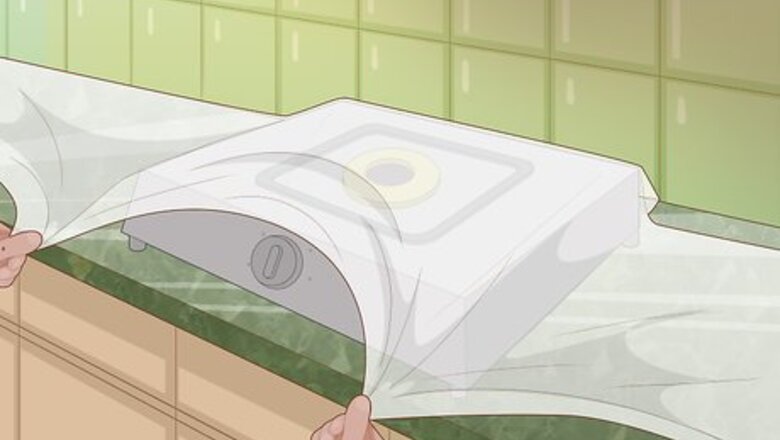
views
Cleaning and Preparing the Tiles
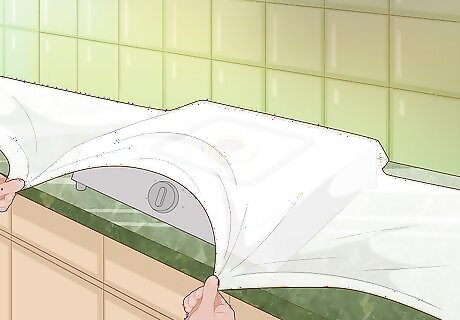
Prepare the work area carefully before you start. You don't want to get paint splashed on your benchtops, floors, or walls, so take some time to cover any areas that you want to protect with a painter's drop cloth or an old sheet.
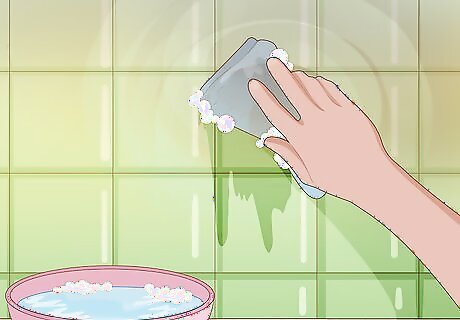
Clean the tiles thoroughly with detergent and a wet cloth. Any cooking splatters or grime on the tiles will prevent the primer and paint from adhering properly. To get a perfectly smooth finish, give the tiled area a thorough clean with a tile-cleaning product, or use sugar soap and a scouring cloth. You can also make a paste from an oxygen bleach powder like OxiClean. Scrub the surface of the tile with a scrub brush dipped in the paste, let it sit for about 10 minutes, then rinse or wipe it completely clean with water. If you see any mold, you can remove it by applying a fungicidal spray. Scraping out and replacing any grout that is in poor condition before you start will give the best finish.
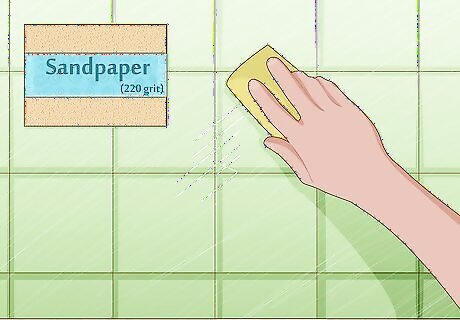
Sand the tiles with a fine-grit sandpaper. Once the surface is dry, lightly sand the tiles to score the surface, using 220 grit sandpaper for ceramic tiles. This will remove any glaze and help the new paint to adhere better. Once the surface is sanded, you'll need to wipe away any remaining dust or grit with a damp cloth. Leave the tiles to dry completely for 24 hours; after all the preparation work, you really want to make sure the paint will stick. Using an electric sander will make the job quick and easy if you have a large area.
Priming the Tiles
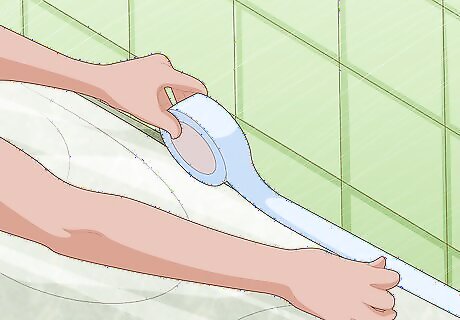
Mask the edges of your work area. Use painter’s tape to mark out your specific area, making sure you use long runs of tape to give you a straighter edge and pressing down firmly. When you have finished masking the edges, give the tiles a final quick wipe with a damp cloth to remove all the dust, and leave the area for an hour to ensure it is completely dry.
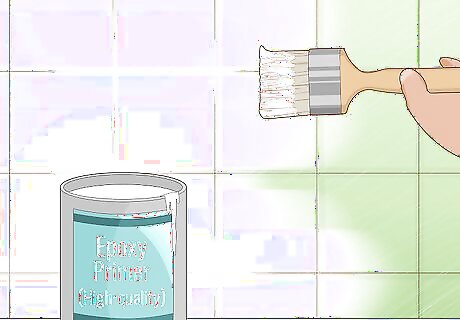
Prime the tiles with a high-quality epoxy primer. Purchase primer from your local hardware or paint store and apply it evenly according to the manufacturer's instructions. Allow the primer to dry and cure; drying times can vary a lot so check the instructions on your specific product carefully. Choosing the right primer for your specific tiles will ensure you get the best result.
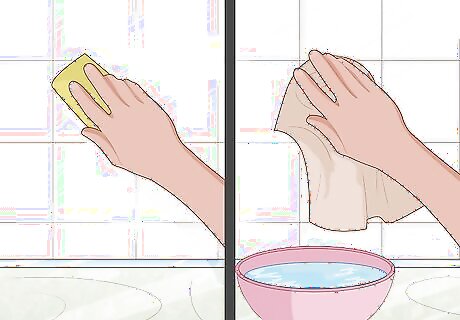
Sand and clean the tiles a second time. Once the primer has cured, lightly sand the surface of the tiles again and wipe away any dust with a damp cloth. The cleaner your surface area, the better the paint will adhere. Now you’re ready for painting.
Painting the Tiles
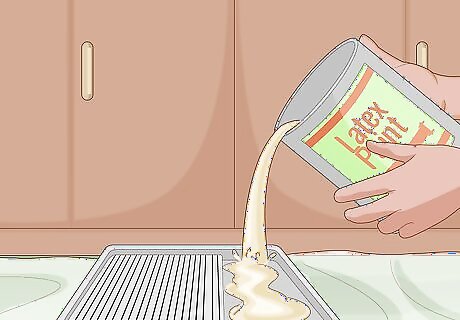
Stir the paint and pour it into a clean working pot. Choose a high-quality latex, oil, or epoxy paint that will adhere properly to the surface of your tiles. Epoxy is generally the most durable and appropriate for ceramic tiles around your kitchen sink or floor.
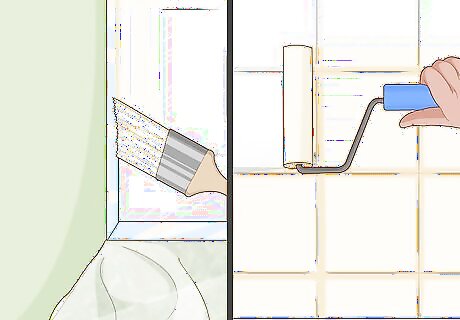
Use a small, angled brush for the edges and a roller for larger areas. Use a paintbrush to paint the edges and hard-to-reach areas, like corners, first. If you have a large surface to paint, use a roller for covering the tiles more quickly. To avoid any overlapping brush strokes, start in one corner and work your brush strokes or roller down the tiles, then across the area or wall. A roller won’t get into the grout, so make sure you apply the paint with a brush here as well.
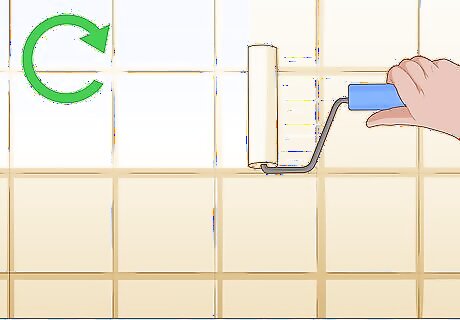
Apply several thin coats of paint. Rather than applying a thick coat, it’s better to be patient and apply several thin coats allowing each coat to dry completely before adding the next. Finally, perform the finishing touches by removing the painter’s tape carefully and allowing the final coat to properly cure for two to three days before you use the area.




















Comments
0 comment